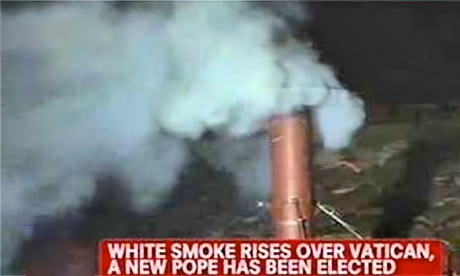The two dogmas adopted 150 years ago this month at the First Vatican Council deserve contemplation rather than celebration.
The final vote was accompanied by a violent thunderstorm over St. Peter’s Basilica, darkness lit up only by frequent flashes of lightning and by a flaming taper brought in to enable the voting roll-call to be readout.
Nobody doubted that the storm was providential. Those in favour interpreted it as a celestial fireworks display; those against, as a sign of divine disapproval of ambition influencing doctrine. Who was right is still open to debate.
The objective of the Council was to strengthen the papacy in its teaching and governing roles. This was not stated openly, but Pope Pius IX put it beyond doubt through his actions.
The pope changes the agenda, ends the Council
When time was running out and the approaching heat of a Roman summer signalled a recess, the pope abandoned his early stance of neutrality on the twin issues of papal infallibility and universal jurisdiction. He made it known that he wanted them passed.
He changed the agenda abruptly, interrupting the discussion on the early chapters of Pastor Aeternus to bring forward a new Chapter IV, which dealt with his own office and which proposed to turn the two disputed theories into beliefs that would be essential for salvation.
When it became obvious that no such teaching could command the virtual unanimity traditional for major decisions at Councils, he put aside tradition and ruled that a simple majority would do.
On that basis the dogmas were adopted on July 18, 1870, and the Council broke up for the summer intending to meet again on November 11.
On October 20, however, Pius IX adjourned the council indefinitely because of the Franco-Prussian War and the loss of Rome to the forces unifying Italy. The suggestion that the Council should be reconvened at another venue was ignored.
Although the Council had completed only a small fraction of its original agenda, Pius never reconvened it. Nor did his successors.
Judged by its fruits, Vatican I was a disaster. It gave legal and moral endorsement to the administrative and doctrinal ambitions that had played such a crucial role in the East-West Schism and the Reformation.
Instead of resolving these divisions, as many of the attending bishops had hoped, the Council created greater obstacles to Christian unity. It broke with the very first Council of the Church at Jerusalem, which had adopted the principle of not burdening people’s consciences unnecessarily.
This occasioned another schism, that of the Old Catholics of Utrecht who could not honestly profess the new dogma of papal infallibility.
The damage is done
Externally, at a social and political level, infallibility did permanent damage.
It provoked the Kulturkampf in Germany, a bitter 15-year struggle between the government of Chancellor Bismarck and the Church for control of institutions and of the appointment of clergy.
Anti-Church laws were enacted, schools and hospitals appropriated, and impossible conditions imposed on priests. Many went to jail or were deported. Jesuits, Redemptorists and Holy Ghost congregations were dissolved and expelled.
In the end, Bismarck had to back down but the pervasive Catholic influence in German culture has never fully recovered.
Similar reactions to the definition of infallibility, with less extreme effects, were encountered in Italy, Switzerland, Russia, Austria, and the United States. Venezuela confiscated Church property. Colombia did the same.
The reaction should have been foreseen. If the papal diplomats had issued any warnings, however, Pio Nono was not listening.
The Ultramontanists had been campaigning to give the pope an absolute infallibility.
This had created genuine apprehension among governments, pitting them strongly against the Church in advance of the Council. Those with significant Catholic populations were alarmed by the possible effect of an infallible edict on public order or national stability.
Prince Clodwig zu Hohenlohe had expressed the view that papal infallibility would elevate the power of the pope above that of princes and people, “to the detriment of both”.
In the dogmatic definitions, the Ultramontanists did not get everything they were looking for. The wording of the dogma limited papal infallibility to issues of faith and morals. It also set some conditions.
At that stage, however, telling nervous politicians about the conditions was little use.
They knew better than most how easily authority could ignore or circumvent conditions, particularly when there is no avenue of appeal. No pope has incited citizens to rebellion since then, although some single-issue bishops have tried to tell Catholics how they ought to vote.
On religious issues, infallibility has been invoked officially on only one occasion – when Pope Pius XII defined the Assumption of Our Lady.
The papacy, however, has not been above circumventing the conditions. The title alone produces a general aura of infallibility because nobody bothers with the small print. And the twin dogma of universal jurisdiction makes it impossible to challenge abuse.
Over the years more and more things have been presented as infallible, irreformable or irrevocable.
Pious churchmen use the term creeping infallibility, but that seems to credit it with some validity.
Teaching that does not meet the conditions are not infallible and should be more accurately termed pseudo-infallible. Continue reading
- The analysis or comments in this article do not necessarily reflect the view of CathNews.
